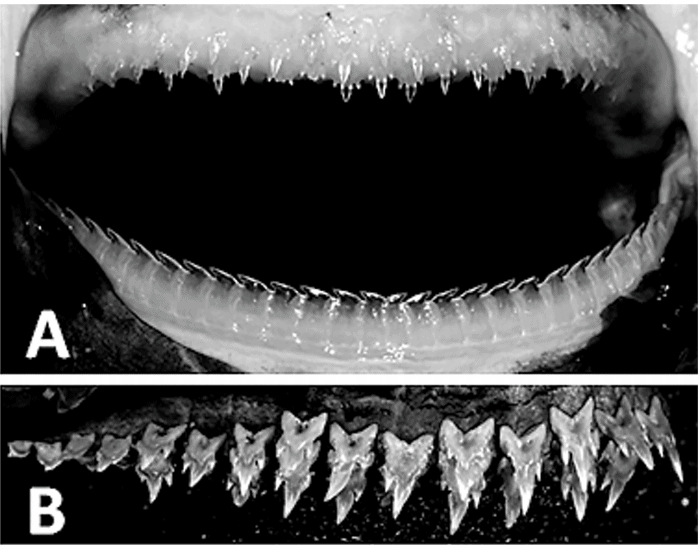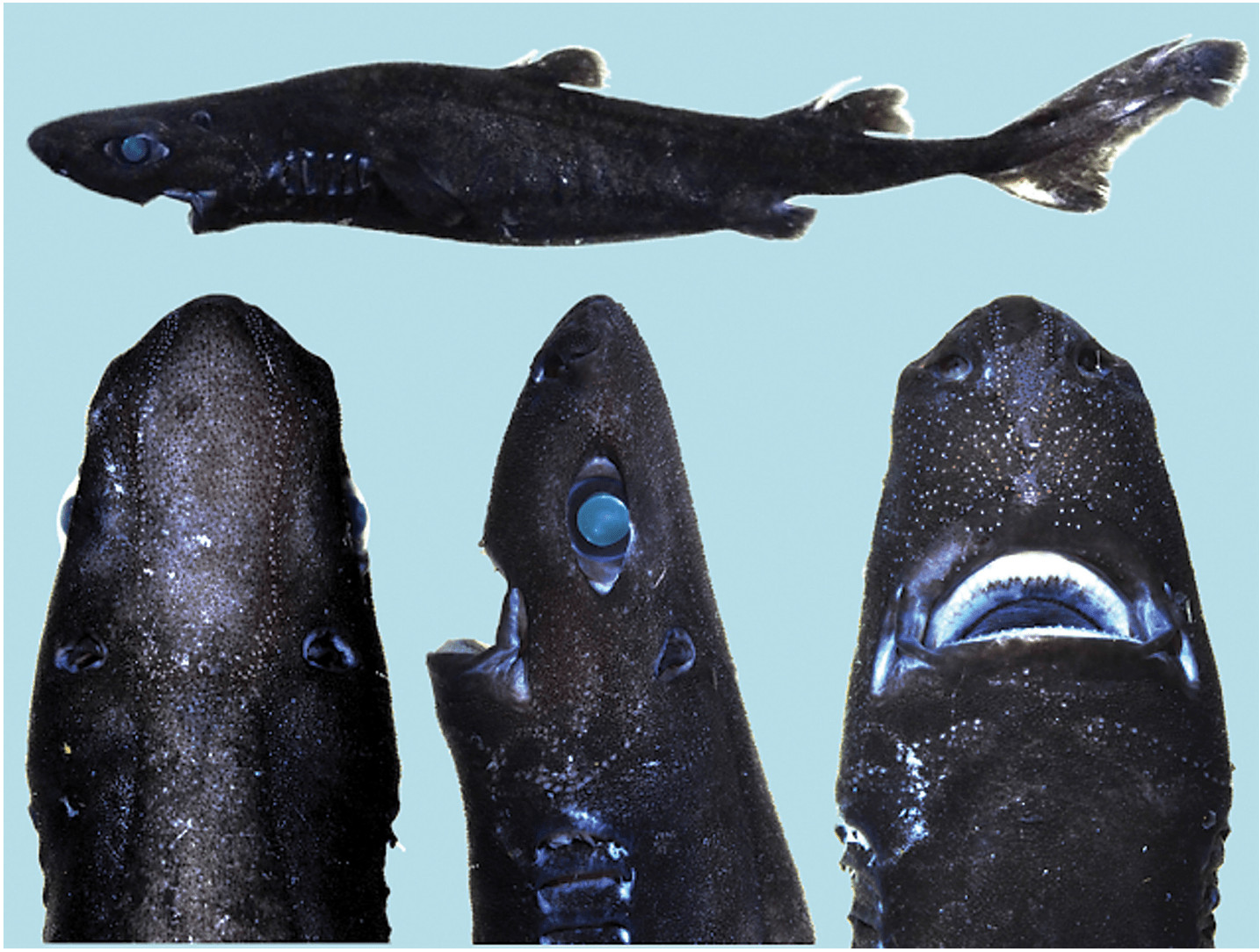With its pale green eyes and eery grin, a mysterious shark has intrigued scientists since 2010 when it was first hauled aboard a Spanish research vessel cruising the Central American coast. It took five years of study for researchers to confirm that the creature was a new species of lanternshark, and when it came time to name the new species, shark researcher Vicky Vásquez decided to turn to people she knew would appreciate its sci-fi level creepiness.
Vásquez got together four of her cousins, aged 8 to 14, in an online video chat for a brainstorming session. Noting the shark’s stealthy appearance, the youngsters suggested the name “Super Ninja Shark.” Vásquez helped her cousins pare down the shark’s monicker, settling for Ninja Lanternshark, and announced the new species in December’s issue of the Journal of the Ocean Sciences Foundation.
Jet-black skin; glow-in-the-dark organs
But it doesn’t take a child to spot the shark’s ninja-like qualities. The newly identified shark has jet-black skin (like many deep sea sharks) and faintly glowing internal organs. The Ninja’s blackness presumably allows it to hide in the darkness of the deep ocean, while its dim halo could help it blend in with the small rays of light from above, making it virtually invisible to prey.

The shark’s scientific name, Etmopteru benchleyi, was chosen to honor deceased “Jaws” author Peter Benchley, who became an avid shark conservationist after the film adaptation of his book inadvertently incited worldwide fear and hatred of sharks.
“He carried a burden of regret for the violent backlash against sharks unintentionally instigated by his book,” Douglas Long, one of the shark’s discoverers, wrote in Deep Sea News. “For years afterward, he was not just an advocate for sharks, but a tireless campaigner in promoting ocean conservation.”
The Ninja now joins more than 30 previously discovered species of lanternsharks from the genus Etmopterus. It is the first lanternshark found off the coast of Central America, and four of the eight specimens collected were found in Costa Rican waters.
Swimmers have no need to worry, however, the shark only grows to about 50 centimeters in length and dwells more than 800 meters below the surface.






